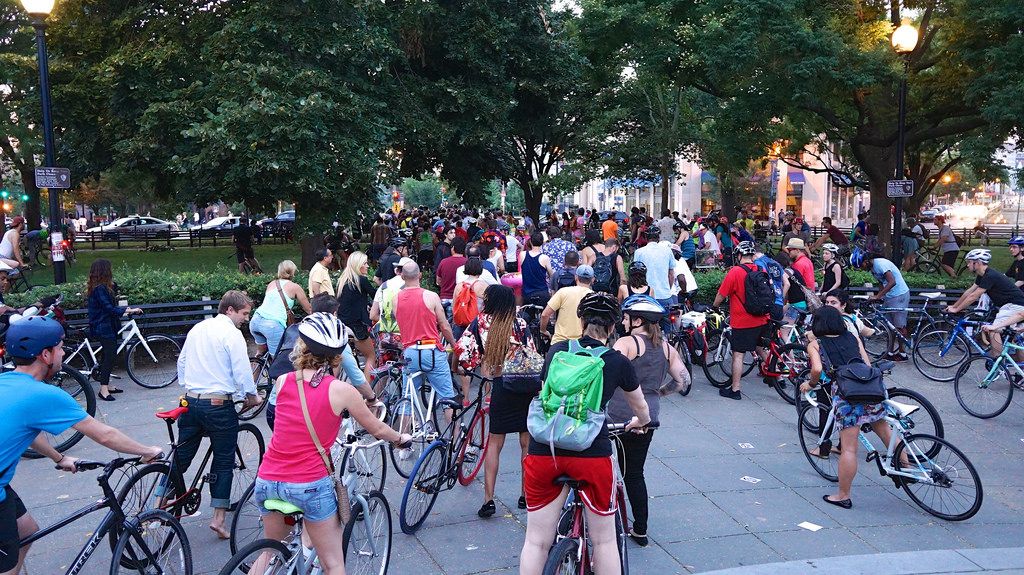Views expressed in opinion columns are the author’s own.
The increasing use of non-vehicular transport is a great sign for cities looking to lower their carbon emissions and reduce traffic gridlock. But cyclists and pedestrians face much greater risks than their car-bound peers. An international movement to eliminate traffic-related fatalities, Vision Zero, has been implemented across the country, including Washington, D.C., and Montgomery County, though it has had limited success.
In D.C., Mayor Muriel Bowser first implemented her Vision Zero initiative in 2015. Unfortunately, traffic fatalities have steadily increased since then. 2018 was a particularly deadly year, ending with 36 traffic fatalities. When one D.C. bike advocate wrote about the initiative’s shortcomings in October, she had to update her article’s title before it was published to reflect the two most recent traffic fatalities. This is unacceptable.
What has the district done to address increasing cyclist and pedestrian fatalities? In November, 93 intersections had their traffic signals “retimed” to give pedestrians a head start before cars with a green light begin to turn right. In January, fines increased for two dozen traffic infractions, such as rolling through a red light or colliding with pedestrians while on a bicycle.
These minor policy changes are not enough. Without broad, bold infrastructure projects like protected bike lanes through the city, Bowser’s Vision Zero feels like an empty gesture.
Some of the fine increases were criticized by cyclist advocates as penalties to pedestrians and cyclists — an already unprotected class — that didn’t necessarily guarantee an increase in traffic safety. For example, cyclists can now be fined $50 for wearing headphones covering both ears while cycling.
One critic raised concerns about unequal enforcement of the fine, worrying that it could be yet another reason for authorities to target black youths. Another concern is that motorists are inherently much safer than cyclists, so the latter shouldn’t have to bear the burden of increasing road safety measures.
Despite a national average of more than two cyclists being killed by motorists per day in 2015, homicide charges or even involuntary manslaughter charges are rare. In the D.C. area, less than half of fatal accidents involving cyclists since 1971 resulted in any charge whatsoever, and the average time served for those convicted is only about 15 months.
On the question of punitive prevention measures and justice for cyclists killed on the road, activists are divided. Few think that putting more people in jail will solve the problem. But there is a deep disconnect between motorists and cyclists that won’t be bridged by more “Share the Road” signs. This rift must be addressed to prevent further loss of life.
Cycling advocates have called for a restorative justice approach for motorists who have injured or killed cyclists. Rather than serve long prison sentences, offenders would volunteer with those impacted by the death of cyclists and work to improve traffic safety for less protected individuals, like pedestrians and cyclists.
In many cities, cyclists are connected through close-knit communities. White “ghost bikes” mark spots where cyclists have been killed, and in D.C., cyclists hold silent memorial rides to remember their friends who have been killed by motorists. The D.C. Department of Transportation needs to ramp up their work with these advocates to achieve Vision Zero’s goals.
Last year in D.C., 36 lives were lost in preventable accidents. No one’s life should be in danger simply because of their choice of transportation.
Emily Maurer is a junior environmental policy major. She can be reached at emrosma@gmail.com.
CORRECTION: Due to a columnist error, a previous version of this article mistakenly stated the average sentence for those charged in fatal bicycle accident in the D.C. area is 15 months. This is the average sentence for those convicted. This article has been updated.



